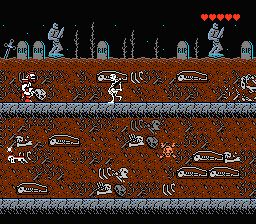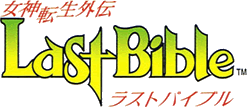
Wrecking Crew is an action game developed and published by Nintendo. Designed by Yoshio Sakamoto, it was first released as an arcade video game for the Nintendo VS. System in 1984, titled Vs. Wrecking Crew with a simultaneous two-player mode. It was released as a single-player game for the Family Computer (Famicom) console in 1985, and as a launch game for the Nintendo Entertainment System (NES) later that year. A sequel, Wrecking Crew '98, was released in Japan in 1998 for the Super Famicom.

Balloon Fight is an action video game developed by Nintendo and HAL Laboratory and published by Nintendo. The original arcade version was released for the Nintendo VS. System internationally as Vs. Balloon Fight, while its Nintendo Entertainment System counterpart was released in Japan in 1985 and internationally in 1986.
In video game parlance, a multicart is a cartridge that contains more than one game. Typically, the separate games are available individually for purchase or were previously available individually. For this reason, collections, anthologies, and compilations are considered multicarts. The desirability of the multicart to consumers is that it provides better value, greater convenience, and more portability than the separate games would provide. The advantage to developers is that it allows two or more smaller games to be sold together for the price of one larger game, and provides an opportunity to repackage and sell older games one more time, often with little or no changes.

Wisdom Tree, Inc. is an American developer of Christian video games. It was an offshoot of Color Dreams, one of the first companies to work around Nintendo's 10NES lockout chip technology for the Nintendo Entertainment System. Color Dreams formed the Wisdom Tree subsidiary in 1990 in an effort to circumvent Nintendo's restrictions against publishers of unlicensed video games for the NES by selling their games at Christian book stores which was not subject to pressure by Nintendo.
The Bugs Bunny Crazy Castle is a 1989 puzzle video game developed by Kemco for the Nintendo Entertainment System. In 1990, it was released with the same title for the Game Boy in North America and Europe. In Japan, it was released for the Disk System as Roger Rabbit, and then for the Game Boy as Mickey Mouse.

Color Dreams is an American company formerly known for developing and publishing unlicensed video games for the 8-bit Nintendo Entertainment System (NES). The company left the video game industry in the mid-1990s, shifting its focus to IP cameras and related surveillance equipment.

Robodemons is an action video game with shooting elements that was released for the Nintendo Entertainment System by Color Dreams on December 20, 1989. Like all Color Dreams games, Robodemons was not officially licensed by Nintendo.

F1 Race is a racing video game developed by HAL Laboratory and published by Nintendo for the Famicom in 1984. A version was released in 1990 for the Game Boy in Japan and in 1991 in Europe and North America, including the Four Player Adapter for four-player gameplay.

The Simpsons: Bart's Nightmare is a 1992 video game developed by American company Sculptured Software based on the television show The Simpsons. The game, split into two parts, follows Bart on the street, trying to find his homework pages. The second part of the game consists of minigames. It was released on the SNES and the Sega Genesis. A sequel, Virtual Bart, was released in 1994. Production conflicts resulted in American game designer Bill Williams to leave the video game industry. The game received reviews from critics such as Entertainment Fun comedy and more!

The Crazy Castle series is a platform game series created by Kemco and released on the Famicom Disk System, Nintendo Entertainment System, Game Boy, Game Boy Color, and Game Boy Advance. It stars different popular cartoon characters, most notably the Warner Bros. cartoon character Bugs Bunny, the Walt Disney cartoon character Mickey Mouse and the Universal cartoon character Woody Woodpecker.

Kid Klown in Night Mayor World is a platform video game for the NES published by Kemco on April 1, 1993 and was the first game in the Kid Klown series. It was a reskin of Mickey Mouse III: Yume Fuusen, a licensed platform video game starring Mickey Mouse that was only released in Japan. Released as part of the Crazy Castle series, Mickey Mouse III was released on September 30, 1992 by Kemco in Japan for the Family Computer.

Kick is an action video game where the player controls a clown on a unicycle catching falling balloons and Pac-Man characters on the clown's hat. It was released in arcades by Midway in 1981. The game was later renamed Kick Man. Commodore published a Commodore 64 port in 1982 without the space in the title as Kickman.

Megami Tensei Gaiden: Last Bible is a role-playing video game series developed by Multimedia Intelligence Transfer, Sega, and Menue, and published by Atlus and Sega for multiple platforms. The first game of the series, Revelations: The Demon Slayer, was released in 1992; this is the only title in the series to have been released in English. After The Demon Slayer, two sequels and five spin-off titles have been released. In the main series titles, players explore the game world and fight monsters in menu-based battles; players can also attempt to recruit monsters to their party, and can fuse two allied monsters into a single new one to try to get stronger monsters. The spin-off title Another Bible is a turn-based strategy game, while Last Bible Special is a role-playing game controlled from a first-person perspective.

Bugs Bunny: Crazy Castle 3, is a platform game developed by Kemco as part of the Crazy Castle series. It was originally released in Japan as a Game Boy title in July 1997 called Soreyuke!! Kid: Go! Go! Kid starring the character Kid Klown. The title was later remade on the Game Boy Color to include colorized graphics and characters from the Looney Tunes series, which was released in Japan in January 1999 by Kemco, and later that year in North America and Europe by Nintendo. It replaces Honey Bunny with Lola Bunny as Bugs' love interest to be rescued. It was followed by a sequel, Bugs Bunny in Crazy Castle 4, in 2000.

Joe & Mac 2: Lost in the Tropics, known in the PAL region as Joe & Mac 3: Lost in the Tropics, is a 1994 Super Nintendo Entertainment System video game and a sequel to Joe & Mac. It is the follow-up to Congo's Caper, the second game in the series.

Dood's Big Adventure is an action-adventure and art-based video game developed by THQ Digital Studios Phoenix and published by THQ for the uDraw GameTablet for the Nintendo Wii. The game lets players draw, tilt and maneuver through 60 different challenging levels by creating their own hero and tools within the game. It was released for the Nintendo Wii game system in 2010 in North America and in 2011 for PAL region.

ESPN X Games Skateboarding is a video game developed by Konami for the PlayStation 2 and Game Boy Advance. The PlayStation 2 version was released in North America on August 14, 2001, in Japan on September 20, 2001, and in Europe on January 25, 2002, while the Game Boy Advance version was released in North America on September 12, 2001, in Japan on October 25, and in Europe on November 16. The game was released as part of Konami's ESPN The Games brand.

Paper Mario: Color Splash is a 2016 role-playing video game developed by Intelligent Systems and published by Nintendo for the Wii U console. It is the fifth installment in the Paper Mario series, within the larger Mario franchise. The story follows Mario and his new ally Huey on a quest to save Prism Island and rescue Princess Peach from Bowser.


















